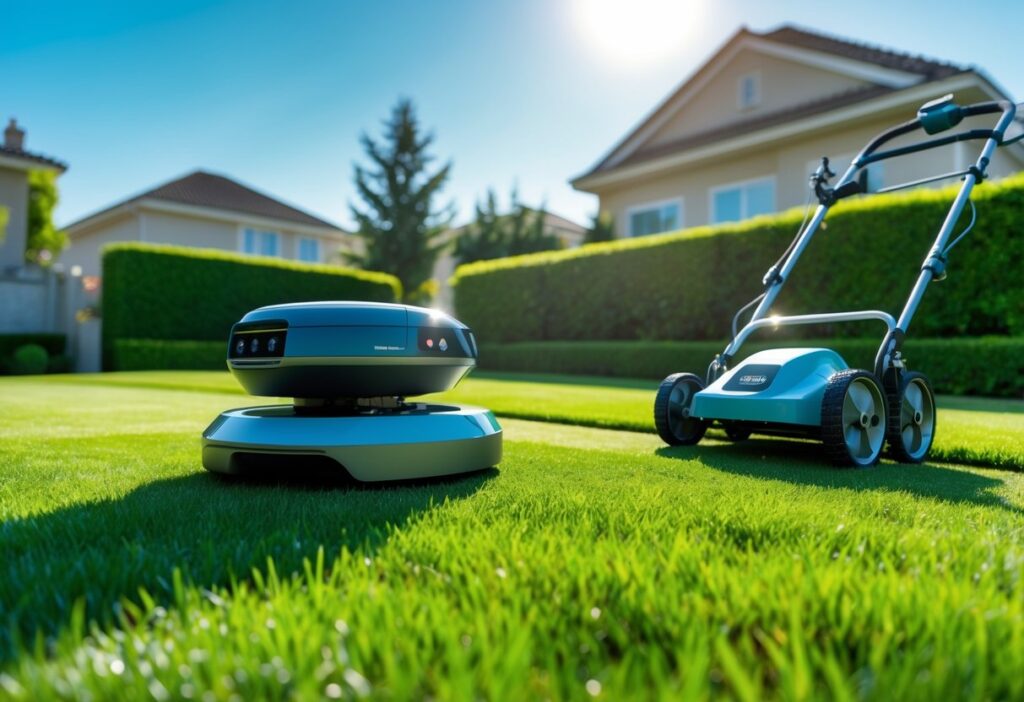The smell of fresh-cut grass is a hallmark of summer, a scent that triggers memories of long, sunny afternoons. That familiar smell is the result of a task that, for generations, has been a weekend ritual for homeowners. But the tool we use for that task has undergone a dramatic transformation, evolving from a simple mechanical contraption into a sophisticated piece of technology. The history of the lawnmower is a perfect reflection of our own technological progress.
From clunky, human-powered reels to intelligent, autonomous robots, the driving force behind this evolution has always been the quest for more power, precision, and convenience. The high-performance lawnmowers of today are the direct descendants of a long line of innovations, each one building on the last to make the job of maintaining a beautiful lawn easier and more efficient. Let’s take a look at the key technological shifts that shaped the machine in your garage.
The Mechanical Age: The Brilliant Simplicity of the Reel Mower
Before the 1830s, the only way to cut grass was with a scythe, a physically demanding tool that required considerable skill. That all changed when an English engineer named Edwin Budding invented the first lawnmower, inspired by a machine used to trim the nap on wool cloth in a textile mill.
His invention was purely mechanical. It used a set of blades arranged in a cylinder (the reel) that rotated against a stationary bottom plate. As the wheels turned, they drove the reel through a set of gears, creating a clean, scissor-like cut on each blade of grass. This simple, brilliant technology was so effective that manual reel mowers are still used today for small lawns and by turf purists who swear by their precise cut.
The Industrial Revolution Comes to the Suburbs: The Gasoline Engine
For nearly a century, mowing the lawn still required significant human effort. The next great leap forward came when the power of the Industrial Revolution was harnessed for the backyard: the small gasoline engine.
In the early 20th century, manufacturers began fitting lawnmowers with compact internal combustion engines. This was a complete game-changer. Suddenly, the operator’s job shifted from providing the power to simply guiding the machine. This innovation made it possible for the average person to maintain a much larger lawn, a key factor in the development of American suburbs after World War II. The gas-powered push mower became an icon of suburban life, a symbol of pride in one’s home that is well documented in the collections of historical institutions like the Smithsonian’s National Museum of American History.
The Era of Precision and Speed: The Zero-Turn Mower
As properties grew larger, the need for more efficient ways to mow them led to the rise of the riding mower. But the most significant innovation in this category was the invention of the zero-turn mower. Patented in the 1960s, this design revolutionized mowing for both commercial landscapers and homeowners with large, complex lawns.
The technology behind it is the use of independent hydraulic wheel motors, allowing the operator to control each drive wheel separately. This lets the mower pivot on a dime—literally turning in a zero-degree radius. For a lawn filled with trees, flower beds, and other obstacles, this incredible maneuverability drastically reduces mowing time by eliminating the need for wide, clumsy turns or follow-up work with a push mower.
The Digital Age: Smart Mowers and Autonomous Robots
The latest evolution is driven by the same digital technology that powers our phones and homes. Modern mowers are becoming increasingly intelligent.
- Smart Features: Many of today’s riding mowers feature Electronic Fuel Injection (EFI) instead of old-fashioned carburetors, which optimizes fuel consumption and provides easier starting. They come equipped with digital displays that track engine hours, fuel levels, and diagnostic codes, making maintenance easier than ever.
- Robotic Mowers: The ultimate expression of lawn care technology is the robotic mower. As covered by tech publications like PCMag, these autonomous machines use a combination of boundary wires, GPS guidance, and intelligent mapping to mow your lawn automatically, day or night. They operate on a “little and often” principle, trimming a small amount of grass every day to maintain a perfectly manicured look with zero effort from the homeowner. They are quieter, emissions-free, and represent the logical endpoint of the quest for total convenience.
The journey from the first push reel to an AI-guided robot is a remarkable story of human ingenuity. Each step has been about solving a simple problem: how to create a beautiful lawn with less time and effort. As technology continues to advance, one can only imagine what the lawnmower of the future will look like.

